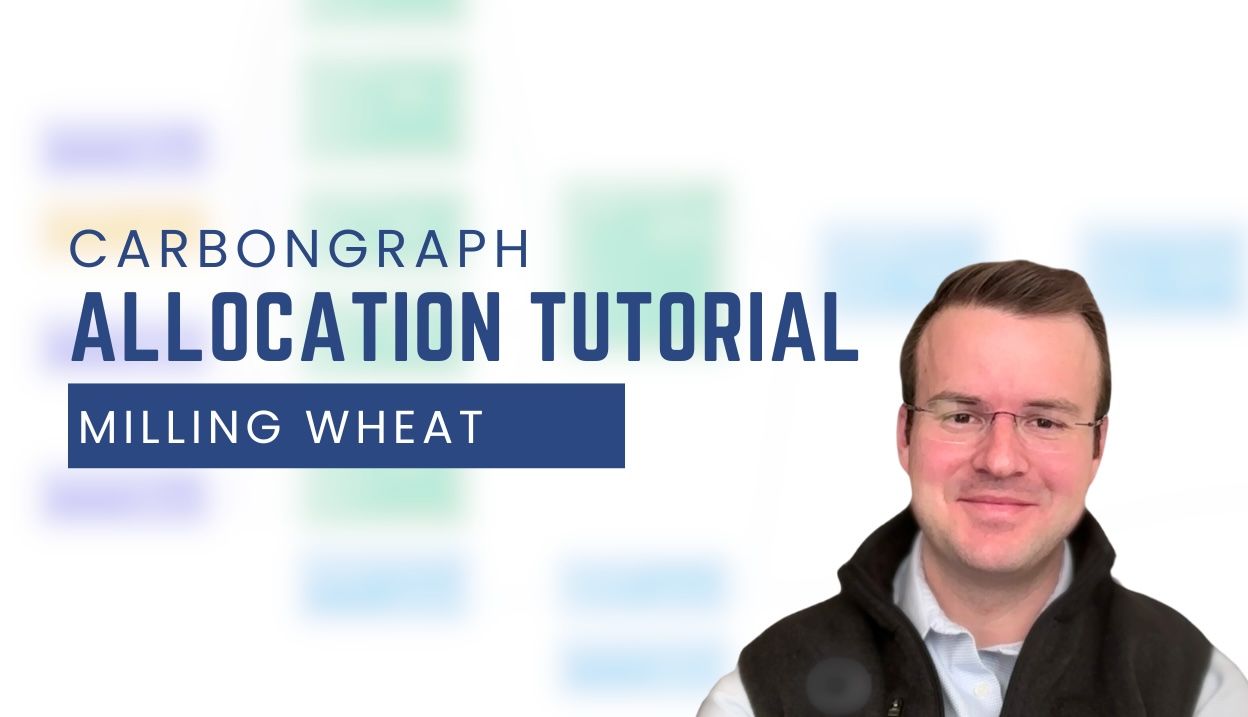Allocation in CarbonGraph

Understanding Co-Product Allocation in LCA with CarbonGraph
When a single production process yields more than one product, those outputs are called co-products. A classic example is milling wheat into both flour and bran. Because these co-products share the same upstream processes (growing the wheat, transporting it, etc.), we need a fair way to distribute the total environmental impact among them. This is where allocation comes into play in Life Cycle Assessment (LCA).
Why Allocation Matters
The goal of LCA is to measure the environmental impact of a product or service, from raw material extraction to end-of-life. When multiple products share the same processes, it’s challenging to say which portion of the environmental footprint “belongs” to each co-product. Ideally, we try to avoid allocation altogether by subdividing processes or using system expansion (whereby additional functions are considered). However, these strategies aren’t always possible. In those cases, allocation becomes necessary.
Common Allocation Methods
Two widely used allocation methods are:
- Physical Allocation – Distributing impacts based on a physical property, such as mass, volume, or protein content.
- Economic Allocation – Assigning impacts according to each co-product’s share of the total market value.
In many real-world scenarios, economic allocation offers a clearer picture of how impacts align with the product’s worth in the marketplace. For instance, if flour significantly outweighs bran in market value, then flour should carry a larger share of the upstream impacts.
Example: Wheat Flour and Bran
In our video tutorial, we demonstrate how to set up economic allocation for a milling process that produces flour and bran. Here’s a quick summary:
- Starting Point: Milling 1 kg of wheat yields approximately 700 g of flour and 300 g of bran. The total impact of producing 1 kg of wheat (plus the milling electricity) is around 610 g of CO₂e.
- Value Difference: Suppose flour accounts for 95% of the total co-product value, while bran makes up the remaining 5%.
- Allocation Step: In CarbonGraph, we specify that 95% of the environmental impact is assigned to flour. This yields roughly 579.5 g of CO₂e assigned to the flour, with the remaining 30.5 g going to the bran.
- Per-Kilogram Calculation: Because we only have 700 g of flour per kilogram of wheat, CarbonGraph automatically converts this to a per-kilogram-of-flour figure. In the end, we see that flour has an impact of around 828 g of CO₂e per kilogram of flour.
What the Video Covers
In the tutorial, we walk through:
- The concept of co-products and why allocation is necessary.
- Different allocation strategies (physical vs. economic) and when to use them.
- Step-by-step instructions for setting up an economic allocation in CarbonGraph.
- Detailed calculations showing how CarbonGraph automatically converts total impacts to a per-kilogram basis.
By the end of the video, you’ll see why we allocate impacts, how to choose the most appropriate method, and how to let CarbonGraph handle the heavy lifting of calculations.
If you’re interested in exploring physical allocation, system expansion, or other advanced LCA modeling techniques in CarbonGraph, stay tuned for future posts or reach out to us directly. And don’t forget to subscribe to our YouTube channel for more tutorials on CarbonGraph modeling and LCA best practices!
Ready to get started? Check out our latest video on economic allocation and see how simple it can be to model co-product impacts using CarbonGraph.
Share
Got a Product in Mind? Let's Model It Together.
Tell us what you're working on, and we'll show you how CarbonGraph can bring it to life with environmental insights.